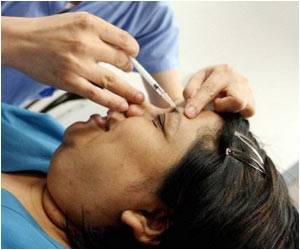Researchers at the Vanderbilt University Medical Center have zoned in on new molecular indicators, called biomarkers , for aging of the skin
Researchers at the Vanderbilt University Medical Center have zoned in on new molecular indicators, called "biomarkers", for aging of the skin that could be an interesting pointer when evaluating anti-aging therapies. The findings of this particular study are reported in the latest issue of the Journal of Investigative Dermatology.
“There's a lot of interest in the pharmaceutical and cosmetic industries in developing products that will minimize or reduce certain signs of aging,” said James Sligh Jr., M.D., Ph.D., assistant professor of Medicine and Cell & Developmental Biology. “The quantifiable biomarkers we've characterized could be useful for monitoring laboratory-simulated aging as well as potential drugs or therapies that alter the aging process.” The reserachers focused on the DNA of cellular organelles called mitochondria, which are known as the "power house" of the cell owing to their ability to generate energy that is vital for various cell processes to take place. “We initiated this project with the idea that perhaps there was a specific mitochondrial DNA deletion signature that would be associated with tumor development in the skin,” Sligh said. The team found to their surprise that there were some mutational deletions in tumor-free samples as well. The tumor samples were more likely to have full-length mitochondrial DNA, Sligh said, rather than significant mutations. “Unraveling the molecular clues as to why aging cells function differently than young cells requires that we have molecular markers that we can track,” Sligh said. “It won't be long before other investigators who have other human tissue specimens — brain, lung, heart, for example — look for these changes and report back. It will be interesting to see if the mitochondrial DNA mutations we've found are markers of aging in other tissues or if they are specific to tissues exposed to ultraviolet light.”Alex Eshaghian, an MSTP student, and former VU medical student Ruth Ann Vleugels, M.D., are the lead authors of the paper. Other contributors include Jeffrey Canter, M.D., Michel McDonald, M.D., and Thomas Stasko, M.D. The research was supported by the VA Medical Research Service, Vanderbilt Skin Diseases Research Center, Ellison Medical Foundation and American Cancer Society.







